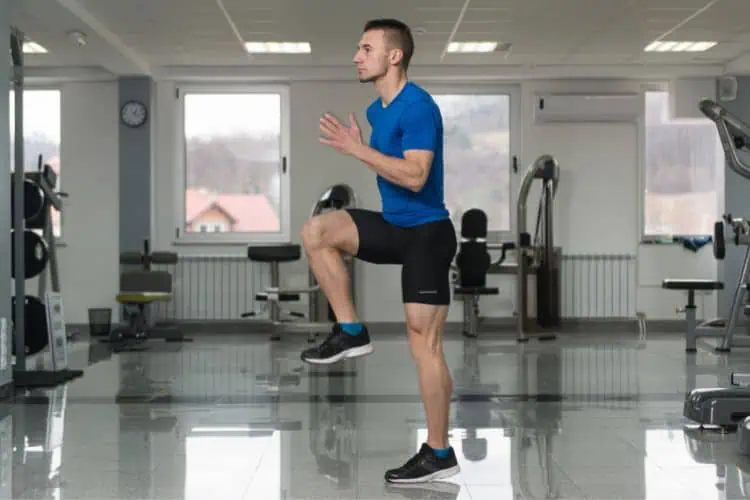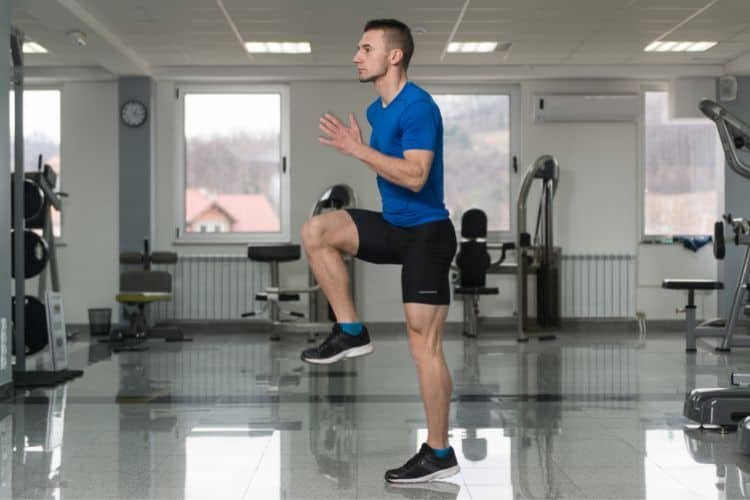
Full body circuit training is a type of workout that combines strength and cardiovascular exercises in a structured sequence. Participants complete a series of exercises targeting different muscle groups with minimal rest in between. This format allows for a high-intensity, full-body workout in a relatively short amount of time. It’s versatile, effective, and suitable for individuals of all fitness levels, making it a popular choice for people looking to improve strength, endurance, and overall fitness.
Benefits of Full-Body Circuit Training
Efficient Workouts
Circuit training is perfect for those with busy schedules. By targeting multiple muscle groups and incorporating cardio, it delivers a comprehensive workout in 30 to 45 minutes.
Improved Cardiovascular Health
Including aerobic exercises in your circuit helps improve heart health and increases endurance. The constant movement and minimal rest periods elevate your heart rate, providing an effective cardiovascular workout.
Builds Strength and Muscle
By integrating resistance exercises, circuit training helps build muscle strength and tone. Whether using bodyweight, dumbbells, or resistance bands, these exercises challenge your muscles effectively.
Boosts Calorie Burn
The high-intensity nature of circuit training creates a calorie-burning effect during and after your workout. This phenomenon, known as excess post-exercise oxygen consumption (EPOC), ensures you continue to burn calories post-workout.
Versatility and Variety
Circuit training can be easily customized to suit individual goals and preferences. You can switch up exercises, intensities, and equipment, ensuring your workout remains engaging and effective.
How to Structure a Full-Body Circuit Training Workout
To create an effective circuit training session, include exercises that target major muscle groups and alternate between upper body, lower body, and core movements. This balance prevents fatigue in a single area while allowing you to maintain intensity throughout the workout.
Key Components
- Warm-Up: Start with 5-10 minutes of light cardio and dynamic stretches to prepare your body.
- Workout: Perform 6-10 exercises in a circuit format. Complete each exercise for a set time (e.g., 30-60 seconds) or repetitions (e.g., 10-15 reps).
- Rest: Take minimal rest between exercises (10-30 seconds) and a longer rest (1-2 minutes) after completing the circuit. Repeat the circuit 2-4 times.
- Cool Down: Finish with stretching and breathing exercises to relax your muscles and prevent stiffness.
Full-Body Circuit Training Workouts
Beginner Full-Body Circuit
This workout is ideal for those new to circuit training. It focuses on foundational movements and can be done with minimal equipment.
- Bodyweight Squats – 15 reps
- Push-Ups (modified if needed) – 10-12 reps
- Plank – Hold for 20 seconds
- Lunges (alternating legs) – 10 reps per leg
- Bent-Over Rows (using resistance bands or light dumbbells) – 12 reps
- Jumping Jacks – 30 seconds
Repeat the circuit 2-3 times.
Intermediate Full-Body Circuit
This workout increases intensity and incorporates more challenging exercises.
- Goblet Squats (holding a dumbbell or kettlebell) – 12 reps
- Push-Ups with Shoulder Tap – 10-12 reps
- Mountain Climbers – 30 seconds
- Romanian Deadlifts (using dumbbells) – 12 reps
- Renegade Rows – 10 reps per arm
- Burpees – 10 reps
Repeat the circuit 3-4 times.
Advanced Full-Body Circuit
This high-intensity circuit is designed for seasoned fitness enthusiasts.
- Deadlifts (barbell or heavy dumbbells) – 10 reps
- Pull-Ups or Assisted Pull-Ups – 8-10 reps
- Jump Squats – 12 reps
- Push-Up to Pike Push-Up – 10 reps
- Single-Leg Romanian Deadlifts (each leg) – 10 reps
- Kettlebell Swings – 20 reps
- Box Jumps – 10 reps
Repeat the circuit 4-5 times.
Equipment Options for Circuit Training
Bodyweight
Bodyweight exercises like squats, push-ups, and planks are accessible and effective. They require no equipment, making them ideal for home workouts.
Dumbbells and Kettlebells
These tools add resistance, enhancing strength-building exercises. Dumbbells are versatile for rows, presses, and lunges, while kettlebells are great for swings and snatches.
Resistance Bands
Resistance bands are lightweight, portable, and excellent for strength training. They’re particularly useful for rows, glute bridges, and lateral band walks.
Cardio Equipment
Incorporating jump ropes, stationary bikes, or treadmills can elevate the cardiovascular component of your circuit.
Tips for Success
Maintain Proper Form
Ensure you perform each exercise with correct form to maximize benefits and reduce the risk of injury. Slow down or modify movements if needed.
Progress Gradually
Increase intensity by adding resistance, repetitions, or circuit rounds as your fitness improves.
Listen to Your Body
Pay attention to how you feel during and after workouts. Rest when needed and adjust exercises to avoid overtraining.
Stay Consistent
Aim to perform circuit training workouts 2-4 times a week, depending on your fitness goals and schedule.
Incorporating Circuit Training Into Your Fitness Routine
Circuit training can complement other fitness activities like running, yoga, or traditional weightlifting. Here are a few ideas:
- As a Primary Workout: Focus on full-body circuits 3 times a week for overall fitness.
- Supplemental Training: Use circuits on non-lifting days for active recovery.
- HIIT Sessions: Combine circuits with high-intensity interval training for a fat-burning workout.
Safety Considerations
- Consult with a healthcare professional if you have underlying health conditions or are new to exercise.
- Warm up thoroughly to prevent injuries.
- Use appropriate equipment and ensure your workout area is safe.
- Stay hydrated and listen to your body’s signals.
Final Thoughts
Full-body circuit training workouts are an excellent way to achieve a balanced, effective workout that targets strength, endurance, and cardiovascular fitness. With their flexibility and efficiency, they’re perfect for anyone looking to maximize results in a limited amount of time. Start with a beginner routine and gradually progress to more advanced circuits as your fitness improves. Remember, consistency and proper form are key to reaping the full benefits of circuit training.

